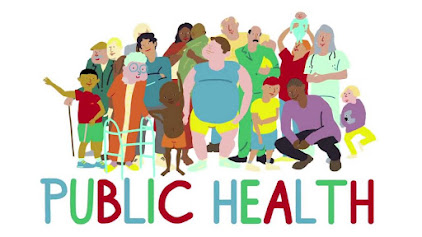Abstract
The escalation of geographical information system (GIS)
application in several fields such as environment analysis has been progressive
in relation to poverty, crime and education (Duecker and DeLacey, 1990,
Huxhold, 1991, Harris and Batty, 1993). However, public health lags behind
these fields in its use of GIS (Urban and Regional Information Systems
Association, 1994). This limitation had largely been highlighted in the literature
(see Fuertstein, 1987; Drummond, 1995; National Association of Country Clubs Off, 2002). However, the
development of measures and strategies that could enhance GIS in public health
had been proposed in terms of location, area and even in data processing (Queralt
and Witte, 1998; McLafferty, 1998; Rushton & Frank, 1995).
The area
of GIS and Public Health has risen to prominence in the past two years with the
recognition that health surveillance practices and health service allocations
need to become more sensitive to the needs of people in local geographic areas.
The collection, storage and manipulation of geographic information have
undergone a revolution in recent years with the development and widespread
availability of GIS software. Many health professionals can benefit from
further education in this area, and with their new knowledge, they can
influence the progress of health surveillance, environmental health assessment
and the geographic allocation of health resources.
This development provide a significant catalyst for the
advancement of public health GIS and the use of geospatial data through the
Internet (Croner, 2003). They provide timely stimulus for the delivery of
public health geospatial information for community, state, and national uses.
They portend important changes. Based on emerging geospatial infrastructure in
the twenty first century.
A GIS can
be a useful tool for health researchers and planners because health and
ill-health are affected by a variety of life-style and environmental factors,
including where people live, characteristics of these locations (including
socio-demographic and environmental exposure) offer a valuable source for
epidemiological research studies on health and the environment. Scholten and
Lepper (1991),
With the huge
increase in the use by planners of geographic information systems (GIS), a need
has developed for accompanying statistical routines to aid in the analysis and
interpretation of geographical data particularly spatial analysis.
(Levine, 1996) Many planners use GIS to isolate geographical
areas, subpopulations, land uses, and road systems according to various search
criteria, extracting objects on the basis of geographical or attribute
conditions. The existing GIS packages are very sophisticated tools for
geographical and database operations. They can conduct a wide variety of
different overlay operations: creating buffers around objects, selecting
objects by their proximity to other objects, unioning smaller objects into
bigger ones and splitting larger objects into smaller objects, as well as
implementing a whole range of database functions (e.g., conditional queries,
object queries). (Levine, 1996)
The information
contained in a GIS is not in itself unique. Rather, the uniqueness of GIS lies in
its ability to integrate pieces of existing spatially-referenced information in
unprecedented ways. Some go so far as to say that, based on the new
perspectives offered by GIS, it might even constitute a new discipline
(Goodchild, 1990). Whether or not this
is a realistic assessment, there is little doubt that GIS offers great benefits
in the constructivist, holistic model upon which it is based--a perspective
that is gaining attention among educators (Boyer and Semrau, 1995).
Many
geography educators hold that enhancing geography education must include
integrating spatial technologies such as GIS (Nellis, 1994). GIS research has in turn expanded to include
theoretical and practical questions about its place in the framework of
education, (Suit, 1995) since lack of such understanding would undermine the
potential of the tool itself (Donaldson, 1999).
Likewise, if GIS is to evolve into a significant force in education,
more thought needs to be given to how it is implemented and used in classrooms.
Most geography educators concur that successful GIS implementation will not be
possible without a combination of (1) acknowledgment of its usefulness by
teachers and administrators; (2) a concomitant level of financial support for
this technology; (3) the provision of teacher training; and (4) the creation of
networks to supply teachers and administrators with the entry-level and
advanced information they need to implement GIS.
This study shall investigate the disparity
in terms of the curriculum of spatial methods in the Masteral level and what is
taught in Schools of Public Health using GIS (geographic information systems)
and what employers, particularly in the Public Health sector both private and
public expect these students to be able to do using spatial analysis tools
competency. Moreover, this study shall include the state and local public
health offices, public health research firms, and GIS educators in order to
determine if their employees coming out of these schools possess the
necessary skills or are they being taught on the job to use GIS.



